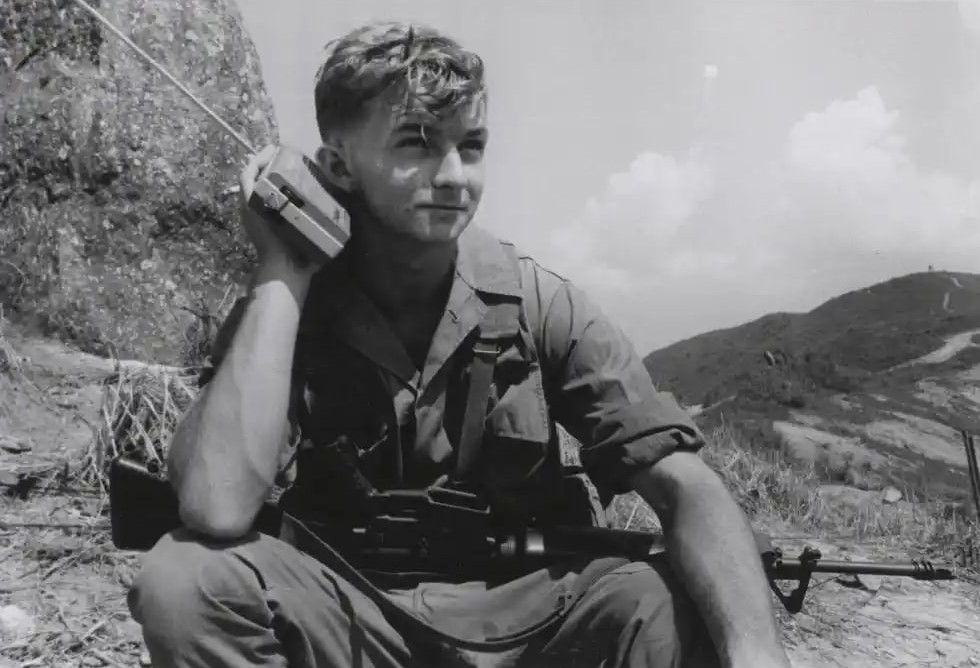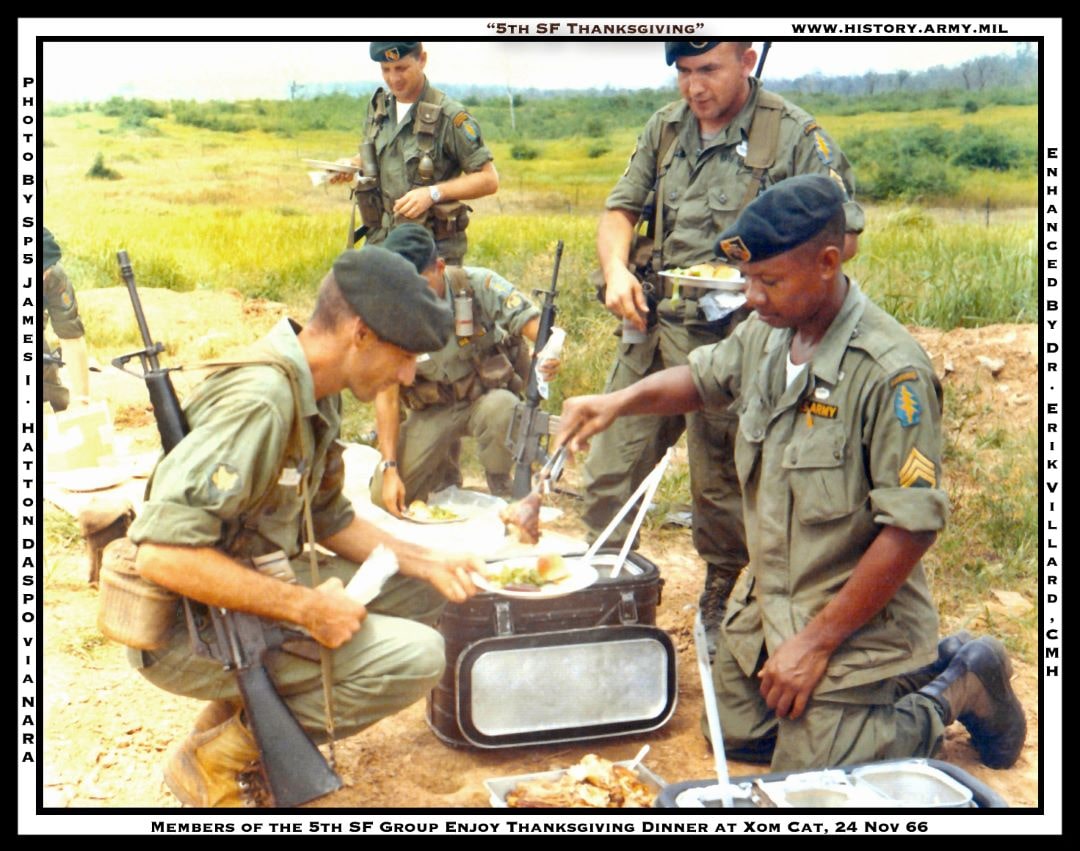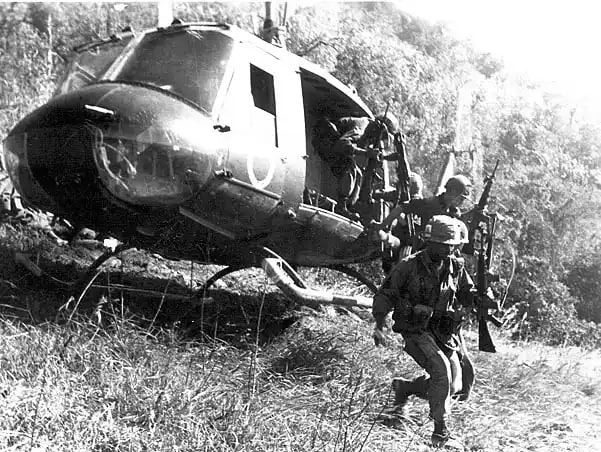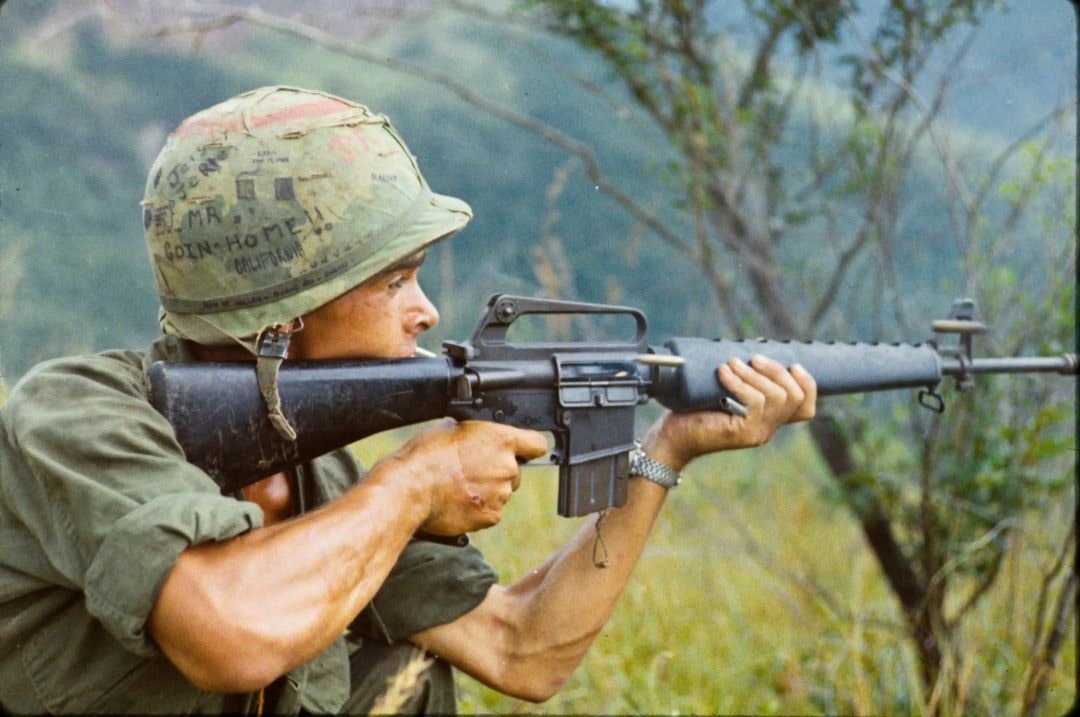Discover and read the best of Twitter Threads about #Vietnamwar
Most recents (24)
M48 PATTON MAIN BATTLE TANK - END OF THE VIETNAM WAR 50TH ANNIVERSARY COMMEMORATION
Part of the Patton family of main battle tanks, the M48 saw widespread use by the U.S. Army during the Vietnam War, providing crucial infantry support, particularly in intense urban combat.
Part of the Patton family of main battle tanks, the M48 saw widespread use by the U.S. Army during the Vietnam War, providing crucial infantry support, particularly in intense urban combat.

Originally developed in the early 1950’s as a first-generation main battle tank, the M48 was quickly modified in several variants. The model which was most common in the Vietnam War was the M48A3, developed in the late 1950’s.
#TRADOC #Armor #VietnamWar #Armyhistory #USArmy
#TRADOC #Armor #VietnamWar #Armyhistory #USArmy
Although it was superseded by the M60 tank in the early 1960’s, the M48 performed well in Vietnam, where the scarcity of tank-on-tank combat allowed the slightly behind-the-times M48 to shine in infantry support and convoy defense roles.
#VietnamWarHistory #VietnamVeterans
#VietnamWarHistory #VietnamVeterans

U.S. ALLIES IN VIETNAM - END OF VIETNAM WAR 50TH ANNIVERSARY COMMEMORATION
Although the U.S. was the main military supporter of South Vietnam, combat troops from South Korea, Thailand, Australia, and New Zealand fought in the Vietnam War as well.
#Armyhistory #USArmy #TRADOC
Although the U.S. was the main military supporter of South Vietnam, combat troops from South Korea, Thailand, Australia, and New Zealand fought in the Vietnam War as well.
#Armyhistory #USArmy #TRADOC

South Korea was the second-greatest contributor of forces, sending over 300,000 soldiers to Vietnam from 1965 – 1972, where they earned a reputation for combat efficiency. By the end of 1972, most foreign forces in-country were South Korean.
#VietnamWar #VietnamWarHistory
#VietnamWar #VietnamWarHistory

SOLDIER PROFILE - GENERAL WILLIAM WESTMORELAND - VIETNAM WAR 50TH ANNIVERSARY COMMEMORATION
Widely remembered as the face of the U.S. war effort in Vietnam, GEN Westmoreland commanded Military Assistance Command – Vietnam (MACV) from 1964 to 1968.
#Armyhistory #USArmy
Widely remembered as the face of the U.S. war effort in Vietnam, GEN Westmoreland commanded Military Assistance Command – Vietnam (MACV) from 1964 to 1968.
#Armyhistory #USArmy

Westmoreland’s career began at West Point, after which he climbed up the ranks during WWII, during which he garnered a sterling reputation. He further burnished his career by becoming the youngest MG in the U.S. Army in 1956 and superintendent of West Point in 1960.
In JAN 1964, Westmoreland was made deputy commander of MACV; in JUN he was elevated to overall command. He occupied that role for the next four years, during which he would become the primary force shaping U.S. military strategy in the region.
#VietnamWar #VietnamWarHistory
#VietnamWar #VietnamWarHistory

AMERICAN FORCES VIETNAM NETWORK (GOOD MORNING VIETNAM!) - END OF THE VIETNAM WAR 50TH ANNIVERSARY COMMEMORATION
AFVN was a U.S. military radio network which entertained troops with music, comedy, and news and was immortalized in the 1987 movie Good Morning, Vietnam.

AFVN was a U.S. military radio network which entertained troops with music, comedy, and news and was immortalized in the 1987 movie Good Morning, Vietnam.


A direct successor to the famous U.S. Army-operated Armed Forces Radio Service radio stations of WWII, AFVN began broadcasting in Saigon under the banner of Armed Forces Radio Saigon in AUG 1962. As the network grew it was renamed AFVN.
#Armyhistory #USArmy #TRADOC #DINFOS
#Armyhistory #USArmy #TRADOC #DINFOS

AFVN’s round-the-clock broadcasts became an important source of news of current events and provided a respite from the hardships of military life through music and humor. AFVN stations also became a tool for broadcasting information to the Vietnamese people.
#PublicAffairs

#PublicAffairs


SPECIAL FORCES AND OPERATIONS IN VIETNAM
The modern conception of U.S. military special operations crystallized during the #VietnamWar, when elite special forces units conducted clandestine operations under the command of the MACV Studies and Observations Group (MACV-SOG).
The modern conception of U.S. military special operations crystallized during the #VietnamWar, when elite special forces units conducted clandestine operations under the command of the MACV Studies and Observations Group (MACV-SOG).

MACV-SOG was created on 24 JAN 1964 as a joint task force dedicated to covert operations under the command of a U.S. Army Special Forces colonel; accession to the unit was strictly voluntary, and the Army 5th Special Forces Group provided the largest share of volunteers. #USArmy 



Its elements conducted a wide range of sensitive missions, including strategic reconnaissance, personnel recovery, psychological operations, direct action, sabotage, and counterintelligence. As the war escalated SOG grew, and its activities expanded into other countries.
#TRADOC
#TRADOC

3 APRIL 1969 - VIETNAMIZATION BEGINS - #VietnamWar
Shortly after taking office, President Richard M. Nixon announced a policy that heralded the coming end to US combat in Southeast Asia and a simultaneous strengthening of South Vietnam's ability to defend itself.
#Armyhistory
Shortly after taking office, President Richard M. Nixon announced a policy that heralded the coming end to US combat in Southeast Asia and a simultaneous strengthening of South Vietnam's ability to defend itself.
#Armyhistory

On 3 Apr 1969, Nixon proposed to begin the process of Vietnamization as part of the new strategy. On 8 June 1969 the Midway Conference was held and upon completion of talks South Vietnam, and US heads of state announced the initial withdrawal of US troops.
#USArmy #TRADOC
#USArmy #TRADOC
The option for further withdrawals was to be geared to the improvement and modernization of the Republic of Vietnam Armed Forces, developments at the Peace Talks in Paris, and the status of enemy capabilities and activities.
#MilitaryHistory #Vietnamization #Nixon
#MilitaryHistory #Vietnamization #Nixon

M72 LIGHT ANTI-TANK WEAPON (LAW) - END OF THE VIETNAM WAR 50TH ANNIVERSARY COMMEMORATION
The standard anti-tank weapon during the Vietnam War, the M72 LAW continued the legacy of WWII’s “bazooka,” providing frontline troops with compact, lightweight high explosive firepower.
The standard anti-tank weapon during the Vietnam War, the M72 LAW continued the legacy of WWII’s “bazooka,” providing frontline troops with compact, lightweight high explosive firepower.

Developed during the late-1950’s as a cheap anti-armor weapon, the M72 was a 2.6 inch single-use HEAT warhead launcher. Just over two feet long and weighing 5.5 pounds with a range of about 660 feet, the M72 was a great improvement over its WWII-era predecessor.
U.S. MILITARY ASSISTANCE COMMAND, VIETNAM (MACV) - END OF THE VIETNAM WAR 50TH ANNIVERSARY COMMEMORATION –
The main command instrument for U.S. forces in Vietnam, MACV presided over U.S. combat involvement in the conflict and became synonymous with the U.S. war effort.
The main command instrument for U.S. forces in Vietnam, MACV presided over U.S. combat involvement in the conflict and became synonymous with the U.S. war effort.

MACV was formed in FEB 1962 to complement the Military Assistance Advisory Group (MAAG). In the ensuing years combat troop activity escalated to the point that MACV absorbed MAAG in 1964, becoming the chief U.S. command in Vietnam.
#Armyhistory #USArmy #TRADOC #VietnamWar
#Armyhistory #USArmy #TRADOC #VietnamWar
RADIOMEN AND BATTLEFIELD COMMUNICATIONS - END OF VIETNAM WAR 50TH ANNIVERSARY COMMEMORATION #VietnamWar
One of the most enduring images of the Vietnam War is that of the radioman on patrol, his back-mounted radio providing vital communications in the Vietnamese jungle. @USArmy
One of the most enduring images of the Vietnam War is that of the radioman on patrol, his back-mounted radio providing vital communications in the Vietnamese jungle. @USArmy

During the Vietnam War, the back-mounted AN/PRC-25 “Prick 25” (succeeded by the AN/PRC-77) was an essential piece of battlefield tactical communications equipment. With a range of 3–5 miles, the PRC-25 allowed units to communicate with each other and with rear elements. @TRADOC
The role of combat radioman was one of the riskiest in Vietnam. Its 10-foot antenna made radiomen prime targets, and the role famously (if perhaps doubtful) earned a reputation for having an average firefight survival time of just 5 seconds.
#Armyhistory #USArmy #TRADOC

#Armyhistory #USArmy #TRADOC


CREATION OF AIRMOBILE DOCTRINE - END OF THE VIETNAM WAR 50TH ANNIVERSARY COMMEMORATION
One of the most iconic legacies of the Vietnam War was the U.S. Army’s adoption of new airmobile operation techniques, applying cutting-edge helicopter technology to the modern battlefield.
One of the most iconic legacies of the Vietnam War was the U.S. Army’s adoption of new airmobile operation techniques, applying cutting-edge helicopter technology to the modern battlefield.

The idea for airmobile warfare emerged from experimentation with helicopters during the Korean War. After the end of the conflict in Korea, doctrine was developed to combine the speed of motorized infantry units with the all-terrain mobility of helicopter technology.
#ArmyHistory
#ArmyHistory
UH-1 IROQUOIS “HUEY” HELICOPTER - END OF THE VIETNAM WAR 50TH ANNIVERSARY COMMEMORATION
The Vietnam War’s most iconic helicopter, the UH-1 Iroquois “Huey” was a ubiquitous transport and gunship which came to represent the conflict in the public’s imagination.
#Armyhistory
The Vietnam War’s most iconic helicopter, the UH-1 Iroquois “Huey” was a ubiquitous transport and gunship which came to represent the conflict in the public’s imagination.
#Armyhistory

First introduced in the 1950s, the U.S. Army soon adopted the UH-1 helicopter for use in a variety of roles. Its original designation was "HU" for "helicopter, utility" (hence the sobriquet "HUey"), which was later changed to "UH" for "utility helicopter."
#USArmy @USArmy
#USArmy @USArmy
The UH-1 and its variants were the backbone of the Army’s new airmobile doctrine and performed a variety of roles. These included close air support gunships, assault aircraft for infantrymen, basic transport functions, and "air ambulances" for medical evacuation.
@TRADOC
@TRADOC

SOLDIER PROFILE HAROLD “HAL” G. MOORE - END OF THE VIETNAM WAR 50TH ANNIVERSARY COMMEMORATION
An LTC during the early phase of the Vietnam War, Hal Moore earned fame for his leadership during the Battle of Ia Drang, the U.S. Army’s first major combat engagement in Vietnam.
An LTC during the early phase of the Vietnam War, Hal Moore earned fame for his leadership during the Battle of Ia Drang, the U.S. Army’s first major combat engagement in Vietnam.

Graduating from West Point shortly after WWII, Moore served in the Korean War. In 1964, he participated in the training exercises of the experimental units tasked with testing the Army’s new airmobility doctrines.
#ArmyHistory #USArmy #TRADOC #VietnamWar #Vietnam #7thCavalry
#ArmyHistory #USArmy #TRADOC #VietnamWar #Vietnam #7thCavalry

Moore left for Vietnam in late summer 1965, joining the 1st Cavalry Division (Airmobile). Beginning 14 NOV 1965, Moore put his experience with airmobile tactics to good use as he led the 1st Battalion, 7th Cavalry Regiment in the Battle of Ia Drang.
#1stCavalry @USArmy @TRADOC
#1stCavalry @USArmy @TRADOC

END OF THE VIETNAM WAR 50TH ANNIVERSARY COMMEMORATION – M18A1 CLAYMORE ANTI-PERSONNEL MINE
The M18A1 Claymore was widely used by U.S. Army soldiers during the Vietnam War, where it proved brutally effective during intense close-quarters small-unit jungle combat.
#Armyhistory
The M18A1 Claymore was widely used by U.S. Army soldiers during the Vietnam War, where it proved brutally effective during intense close-quarters small-unit jungle combat.
#Armyhistory

The need for effective anti-personnel mines was first realized in the aftermath of the Korean War, where the enemy’s massive “human wave” infantry attacks revealed a need for compact, lightweight weapons that bridged the gap between hand grenades and indirect artillery fire.
The quest to fill this niche produced the M18A1 Claymore, a slightly convex rectangular anti-personnel mine consisting of 1.5 pounds of C4 explosives and 700 ball bearings, fired in a 60 degree arc with an effective range of between 50 – 100 yards.
#TRADOC #VietnamWar #USArmy
#TRADOC #VietnamWar #USArmy

END OF THE VIETNAM WAR 50TH ANNIVERSARY COMMEMORATION – M16A1 RIFLE
The Vietnam War’s most iconic infantry weapon was the M16, a revolutionary firearm which dramatically enhanced the lethality of soldiers in the conflict’s hard-fought small-unit engagements.
#Armyhistory
The Vietnam War’s most iconic infantry weapon was the M16, a revolutionary firearm which dramatically enhanced the lethality of soldiers in the conflict’s hard-fought small-unit engagements.
#Armyhistory

29 MARCH 1973 – 50TH ANNIVERSARY OF THE END OF U.S. MILITARY INVOLVEMENT IN THE VIETNAM WAR
After a lengthy period of force reduction and “Vietnamization,” the last U.S. troops left Vietnam on 29 MAR 1973, 50 years ago today.
#Armyhistory #USArmy #TRADOC #VietnamWar
After a lengthy period of force reduction and “Vietnamization,” the last U.S. troops left Vietnam on 29 MAR 1973, 50 years ago today.
#Armyhistory #USArmy #TRADOC #VietnamWar

In the aftermath of the final withdrawal of U.S. ground combat troops in August 1972, the remaining U.S. military presence in Vietnam consisted largely of military advisors and their support staff.
#VietnamWarHistory #VietnamVeterans #MilitaryHistory #MACV @USArmy @TRADOC
#VietnamWarHistory #VietnamVeterans #MilitaryHistory #MACV @USArmy @TRADOC

The final “winding down” process (Operation COUNTDOWN) proceeded after the commencement of the ceasefire in JAN 1973. Over the course of the next 60 days, 23,335 U.S. troops were withdrawn, their exodus timed to correspond to the staged release of U.S. POWs. @SecArmy 

END OF THE VIETNAM WAR 50TH ANNIVERSARY COMMEMORATION – STRATEGIC SETTING
The U.S., South Vietnam, North Vietnam, and the Viet Cong had agreed to the Paris Peace Accords on 27 JAN 1973.
#Armyhistory #USArmy #TRADOC #VietnamWar #VietnamWarHistory #VietnamVeterans
The U.S., South Vietnam, North Vietnam, and the Viet Cong had agreed to the Paris Peace Accords on 27 JAN 1973.
#Armyhistory #USArmy #TRADOC #VietnamWar #VietnamWarHistory #VietnamVeterans

Under its terms, all foreign forces were required to leave South Vietnam within 60 days, and American POWs would be repatriated. The Vietnamese had the right to determine their own future, and years of bloody conflict between North and South Vietnam would follow.
@TRADOC
@TRADOC

The departure of the last American ground forces on 29 MAR followed the removal of the last U.S. Army combat unit in Vietnam, the 21st Infantry Regiment’s 3rd Battalion (part of the 196th Infantry Brigade), on 11 AUG 1972.
#MilitaryHistory #POWMIA #NeverForget @SecArmy @USArmy
#MilitaryHistory #POWMIA #NeverForget @SecArmy @USArmy

🇺🇸 Let's take a journey through the #HistoryofUSA! From the early Native American civilizations to the modern-day superpower, this fascinating thread will explore key moments in the development of the United States of America. 🗽🦅 

Before the arrival of Europeans, numerous Indigenous tribes thrived across the land. From the Iroquois Confederacy in the northeast to the Pueblo peoples in the southwest, their rich cultures and societies laid the groundwork for America's story. #NativeAmericanHistory 

In 1492, Christopher Columbus' voyage marked the beginning of European colonization in the Americas. The Spanish, French, Dutch, and English all established settlements, profoundly impacting Indigenous peoples and the land. #Columbus #ColonialAmerica 

In this vintage 3-hour interview with historian Arthur Schlesinger Jr., Special Assistant to #JFK, he makes clear that President Kennedy intended to end US involvement in the #VietnamWar
after winning re-election in 1964.
(Skip to around 17:00) 👇🏽
after winning re-election in 1964.
(Skip to around 17:00) 👇🏽
Schlesinger goes into more detail on Kennedy and Vietnam around 56:00 when a caller asks him to elaborate further.
Thank heavens for @cspan. In the 80s and 90s, before podcasting was a thing, this was the only place to see an in-depth, longform 3 hour interview like this one. 👏🏼
8 - 26 JANUARY 1967 – OPERATION CEDAR FALLS – VIETNAM WAR
Six brigade-size U.S. Army maneuver units conducted a large-scale "search and destroy" operation in the "Iron Triangle," a Viet Cong (VC) stronghold northwest of Saigon.
#Armyhistory #USArmy #TRADOC @USArmy @TRADOC
Six brigade-size U.S. Army maneuver units conducted a large-scale "search and destroy" operation in the "Iron Triangle," a Viet Cong (VC) stronghold northwest of Saigon.
#Armyhistory #USArmy #TRADOC @USArmy @TRADOC

The target area including training, supply and staging areas for a VC main force division and several local force battalions, plus regional military and political command and control, communications and support units and facilities.
#VietnamWar #Saigon #BigRedOne
#VietnamWar #Saigon #BigRedOne
After surrounding the area and establishing blocking positions, U.S. forces swept through while South Vietnamese military and police forces evacuated the civilian population from the war zone.
#TropicLightning #SkySoldiers #MilitaryHistory
#TropicLightning #SkySoldiers #MilitaryHistory

How to get the #grain out of #Ukraine?
The West has feasible options to challenge #Putin's #HungerPlan & avoid a #globalfamine.
Check out my latest piece at @TransitionsMag & see key arguments below THREAD 1/11
@gmfus
tol.org/client/article…
The West has feasible options to challenge #Putin's #HungerPlan & avoid a #globalfamine.
Check out my latest piece at @TransitionsMag & see key arguments below THREAD 1/11
@gmfus
tol.org/client/article…
2/11
#Ukrainian defensive minefields around #Odessa & the #Russian #SeaBlockade are the two key challenges to establishing a secure sea lane for 🇺🇦 #grain export.
#Ukrainian defensive minefields around #Odessa & the #Russian #SeaBlockade are the two key challenges to establishing a secure sea lane for 🇺🇦 #grain export.
3/11
Concerning the first one, the requirements of safe shipping through minefields and effective #CoastalDefense are not incompatible, and a mine-free shipping channel to #Odessa would not seriously compromise the port's defence against #Russian #amphibious operations.
Concerning the first one, the requirements of safe shipping through minefields and effective #CoastalDefense are not incompatible, and a mine-free shipping channel to #Odessa would not seriously compromise the port's defence against #Russian #amphibious operations.
Last week's newsletter
#RoeVWade
#Uk
#vietnamwar
#climate
#goldmining
#Belarus
#EU
look.substack.com/p/eight-things…
#RoeVWade
#Uk
#vietnamwar
#climate
#goldmining
#Belarus
#EU
look.substack.com/p/eight-things…
1/ an excerpt from our lead story in last week's newsletter, on the leaked #RoeVWade decision:
"The most discouraging aspect of the leaked Roe draft opinion is its intention to vest in state legislatures final authority on abortion rights,
"The most discouraging aspect of the leaked Roe draft opinion is its intention to vest in state legislatures final authority on abortion rights,

#UkraineBetrayed
It will be truly pathbreaking, to watch all the #NATO Countries renaming individually their countries #Ukraine 🤪
Then surely they can join together as one and fight against #Russia !
#HypocrisyGalore
It will be truly pathbreaking, to watch all the #NATO Countries renaming individually their countries #Ukraine 🤪
Then surely they can join together as one and fight against #Russia !
#HypocrisyGalore
#UkraineBetrayed
So “Joe Biden” with baggage of defeat in Afghanistan still haunting him, not ready to engage his forces in conflict with #Russia by sending his troops to #Ukraine.
So “Joe Biden” with baggage of defeat in Afghanistan still haunting him, not ready to engage his forces in conflict with #Russia by sending his troops to #Ukraine.

#UkraineBetrayed
While the collateral damage of civilian assets like houses, school buildings, railway stations, airports and other communication & logistics infra becoming targets, impeding mobility of citizens is always a reality, more damaging is the “misinformation war”.
While the collateral damage of civilian assets like houses, school buildings, railway stations, airports and other communication & logistics infra becoming targets, impeding mobility of citizens is always a reality, more damaging is the “misinformation war”.
1. some recommended readings to defend yourself from those mainstream media which lie us in a new war: #Ukraine:
1. read how US public was lied into the #VietnamWar which cost over 2MILLIONS civilian deaths to Vietnam and 50,000 young American lives:
usni.org/magazines/nava…
1. read how US public was lied into the #VietnamWar which cost over 2MILLIONS civilian deaths to Vietnam and 50,000 young American lives:
usni.org/magazines/nava…
2. read how US #SIGINT (signal intelligence= #NSA intercepts) was manipulated to lie US public into the #VietnamWar: usni.org/magazines/nava…
3. read the #ChilcotReport on how US and UK lied on #Saddam: assets.publishing.service.gov.uk/government/upl…
Cómo eran los túneles del vietcong en Vietnam.
Una de las "armas secretas" del #vietcong, los túneles eran cavarlo con paletas y otros instrumentos, alcanzando hasta 20 m de profundidad y pudiendo llegar a decenas de kilómetros de extensión.
🇺🇸🇻🇳
#Vietnam #Vietnamwar
Una de las "armas secretas" del #vietcong, los túneles eran cavarlo con paletas y otros instrumentos, alcanzando hasta 20 m de profundidad y pudiendo llegar a decenas de kilómetros de extensión.
🇺🇸🇻🇳
#Vietnam #Vietnamwar

Mientras tropas y 🚁 🇺🇸 ocupaban los cielos y los bosques durante la guerra de Vietnam los vietnamitas del norte y las fuerzas #comunistas, se valieron de esa estructura primitiva, pero extremadamente eficaz.
🇻🇳
#vietnamese #War #militarypics #Vietnam
🇻🇳
#vietnamese #War #militarypics #Vietnam

Cada malla subterránea podía albergar a miles de personas, por períodos que podían durar varios meses. El complejo más famoso se encuentra en el distrito de Cu Chi, a unos 70 kms al SurEste de Saigón,(la capital de del Sur) y cerca de importantes bases militares 🇺🇸.
🇻🇳
#Vietnam
🇻🇳
#Vietnam








